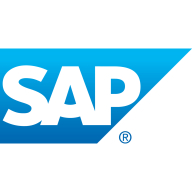

SAP Signavio Process Manager and Camunda compete in the business process management category. SAP Signavio Process Manager appears to have an edge in user-friendliness and collaboration, while Camunda stands out in flexibility and development integration.
Features: SAP Signavio Process Manager is noted for its collaborative capabilities, user-friendly interface, and robust process modeling. Camunda impresses with its flexibility, developer-oriented features, and open-source model which supports extensive customization and integration with BPMN.
Room for Improvement: SAP Signavio Process Manager needs enhancements in interface design, integration capabilities, and document management. Camunda could improve its user interface, expand its language support, and simplify its documentation and technical aspects to be more accessible beyond developers.
Ease of Deployment and Customer Service: SAP Signavio Process Manager offers straightforward deployment across cloud environments and generally good technical support, though response times vary. Camunda provides versatile deployment options and robust support but may experience performance issues and complex user interfaces.
Pricing and ROI: SAP Signavio Process Manager is a high-value solution with flexible licensing, though potentially costly; ROI benefits include improved process visibility and efficiency. Camunda offers a cost-effective solution, notably with its open-source model, though enterprise licenses can be expensive. ROI is realized through operational savings and efficiency in process automation.
We can draw and document our processes, then analyze data within SAP Signavio Process Manager.
On a scale of 1 to 10, I would rate them a 10 for support.
AWS provides the best support, followed by Microsoft, and then Google.
They provide better support for the enterprise edition.
I would rate their technical support a ten.
I have not encountered issues myself, but one of my colleagues found that support was provided quite late, resolving the problem in one or two days rather than instantly.
Camunda offers a high level of scalability, especially when using its SaaS model, which manages and scales implementations automatically.
It allows for easy scaling, especially with ECS service configurations.
They have that REST layer, REST APIs layer that makes it easy to integrate and make it part of a microservices ecosystem and APIs.
There haven't been any significant outages in my experience with Camunda.
We measured the time for each step individually because each activity in the process was an API call to an external API in a different legacy system.
Since they made the move to cloud deployment in a more SaaS-oriented way, they do not invest too much in the community version.
There is an issue where, in some situations, I need to scale up by observing both CPU and memory usage of containers, yet under the current options available at Amazon, this is not possible.
More open documentation would be beneficial to understand the deployment process better and facilitate easier setup.
It should also integrate with non-SAP systems for better functionality.
AWS pricing is very competitive compared to Azure and cheap compared to Google.
There is a licensing cost for using the SaaS model and Enterprise edition of Camunda.
After SAP acquired Signavio, the prices increased significantly, making it too expensive for our small company to afford.
Camunda's support for BPMN 2.0 is a great advantage because it allows us to have a common language to discuss technology and business in the same perspective.
ECS also allows for horizontal scalability with thresholds that can be configured for CPU or memory.
The biggest difference between Camunda and Bonita might be that Camunda is simpler and more flexible for setting.
The ability to perform queries is a feature unique to SAP Signavio Process Manager, and it proves to be very useful for our needs.
| Product | Market Share (%) |
|---|---|
| Camunda | 10.6% |
| SAP Signavio Process Manager | 8.7% |
| Other | 80.7% |


| Company Size | Count |
|---|---|
| Small Business | 42 |
| Midsize Enterprise | 15 |
| Large Enterprise | 29 |
| Company Size | Count |
|---|---|
| Small Business | 17 |
| Midsize Enterprise | 6 |
| Large Enterprise | 43 |
Camunda revolutionizes process orchestration by enabling seamless automation and integration with AI, human tasks, and existing systems while ensuring security and governance.
Built for collaboration between business and IT, Camunda empowers organizations to manage complexity, boost efficiency, and maintain competitive advantage. With a clientele of over 700 top organizations like Atlassian, ING, and Vodafone, Camunda is a trusted partner in designing, orchestrating, automating, and refining critical business processes to accelerate digital transformation. Its open-source nature, ease of use, and REST API integration make it a versatile choice for various needs.
What are Camunda's key features?In banking, Camunda automates processes and manages transactions, while in telecommunications, it optimizes service orders. Governmental and public sectors benefit from workflow automation. Organizations often use either the enterprise edition or the open-source version to create APIs and manage business rules effectively.
The Signavio portfolio of web-based business transformation solutions helps companies to understand and optimize all of their business processes quickly and at scale, providing instant insights for informed decision-making. Signavio’s intuitive analysis, change management and execution solutions around process excellence include use cases like digital transformation, operational excellence and customer-centricity, placing them at the heart of global organizations.
Over 1 million users in more than 1,500 organizations worldwide rely on Signavio products to make processes part of their company’s DNA. Headquartered in Berlin, Germany, Signavio was founded in 2009 to address the need for a collaborative approach to process management.
Signavio was acquired by SAP in the first quarter of 2021. For more information, visit www.signavio.com
We monitor all Business Process Design reviews to prevent fraudulent reviews and keep review quality high. We do not post reviews by company employees or direct competitors. We validate each review for authenticity via cross-reference with LinkedIn, and personal follow-up with the reviewer when necessary.